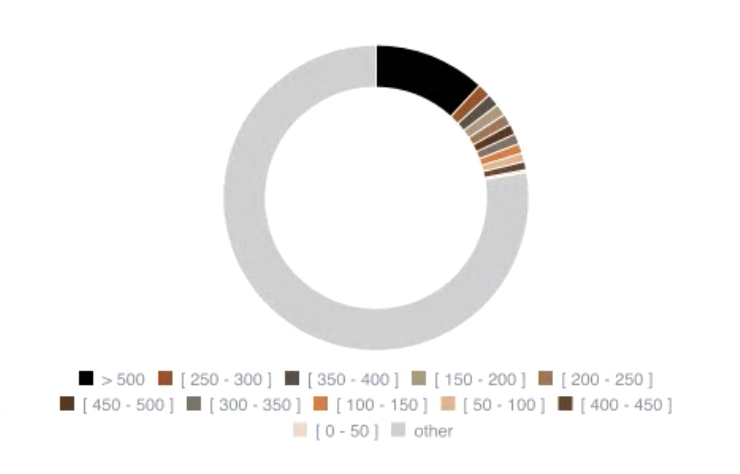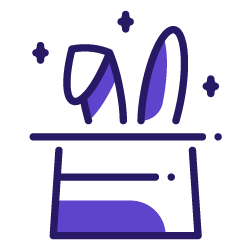Ever wonder whether some of the higher-end items in your e-commerce catalog aren’t selling well because of their price range, or if there’s something else going on? Alice Roussel, Customer Success Manager, decided to find a way to answer this question with Oncrawl.

How to uncover price range distribution on an e-commerce website
Alice wanted to look at the structure of an e-commerce catalog based on item price, so she first needed to make the price of the item on a page available as analyzable data in Oncrawl. To obtain new metrics in Oncrawl, there are multiple options for adding data. However, since pricing data is present on each product page on most e-commerce sites, she chose to pull it directly from the page during a crawl.
She set up and ran a crawl that scraped data from the DOM (the structure) of each page. To do this, she used an XPath rule to find the price meta property listed for each item in the catalog.

She then set up a segmentation with page groups based on price ranges. The actual ranges will depend on the e-commerce site you want to look at, but here’s an example:
- Less than 50
- 50-100
- 100-150
- 150-200
- 200-250
- 250-300
- 300-350
- 350-400
- 400-450
- 450-500
- 500 or more

Oncrawl Trick: If your e-commerce site uses more than one currency, you’ll need to specify the currency in your groups. For example, this will keep items that cost 500 JPY from getting mixed in with items that cost 500 GBP, as the second is (at the time of writing) approximately 145 times more expensive.
You can see that not all of the pages in the website are covered by this segmentation. The price is only found on product pages, and the website might contain many other pages: category pages, landing pages, blog posts, company information, shipping policy… All of the non-product pages are automatically grouped together in the “other” category.
To make a visual assessment even easier, Alice color-coded the page groups in this segmentation. The darker the color of the page group, the more expensive the products in the group.
It is now possible to view Oncrawl metrics by catalog price. All of the charts that use page groups can be set to display by price simply by selecting the price range segmentation from the segmentation menu at the top of the crawl report.
What you can learn from segmenting an e-commerce website by price range
In examining the “Page groups by depth” bar graph, it was easy to spot the pattern of pricing distribution in the structure of the site.
In some catalogs, the pricing appeared to be distributed more or less evenly across the different depths of the site:

Oncrawl Trick: If you can’t spot the pattern, focus on a single price range:

In other catalogs, the distribution told a different story. Close to the homepage, in depths 2-4, were large percentages of inexpensive products. In some cases, nearly all of the most expensive products could only be discovered at a depth of over 10.

Pages at a click depth of 10:
- Are harder to get crawled by Google
- Are harder to get indexed
- Are harder to get updated by Google
- Are considered less important by Google
- Appear less often in the SERPs
- Receive less organic traffic
- Are slower to load because their resources are less solicited in your site’s database
- Are more difficult for shoppers to find when navigating through your site
However, more expensive sales are often the most profitable for an e-commerce site, since the sales margin is so much greater. Alice recommends using internal links to bring these pages closer to the home page. As these page then gain more traffic and better rankings, you can unlock their ability to improve the website’s ROI.
On a different e-commerce site, you might spot other correlations that become obvious once you can see how your products are distributed by price range. Does pricing correlate with HTTP status, page speed, crawl frequency…? Segmenting your products by price range will let you know.

